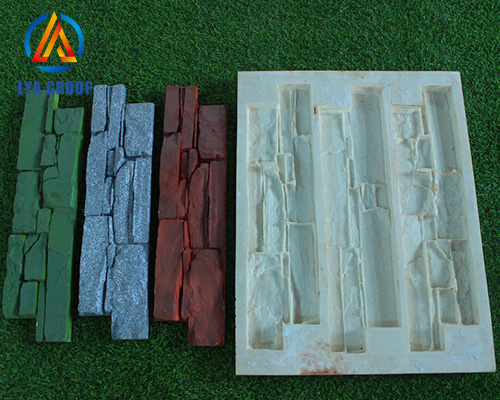The Process of Creating Artificial Stone Mold
News 2024年2月18日 120

Mold Preparation: The artificial stone mold is prepared by applying a release agent or mold release spray to ensure easy removal of the cured stone from the mold. This release agent helps prevent the stone mixture from sticking to the mold surface.
Stone Mixture Preparation: A stone mixture is prepared by combining a blend of binders (such as cement or resin), aggregates (such as sand, crushed stone, or lightweight fillers), coloring agents, and additives. The mixture is carefully formulated to achieve the desired appearance, strength, and texture of the artificial stone.
Pouring the Mixture: The stone mixture is poured into the prepared artificial stone mold. It is important to fill the mold evenly and ensure that all the details and textures of the mold are properly filled.
Curing and Demolding: The filled mold is left to cure and harden. The curing time can vary depending on the specific stone mixture and environmental conditions. Once the stone has fully cured, it can be demolded by carefully removing the mold from the stone. The flexibility or release properties of the mold material facilitate easy demolding without damaging the stone.
Finishing: After demolding, the artificial stone may require some finishing touches, such as trimming excess material, smoothing edges, or adding additional texture or coloring for a more realistic appearance. These finishing steps help enhance the overall quality and aesthetic appeal of the artificial stone.
Artificial stone molds enable the production of consistent, high-quality artificial stone products with a wide range of textures and patterns. They are used by manufacturers, contractors, and DIY enthusiasts to create customized artificial stone for various applications, including cladding, landscaping, architectural accents, and interior design.